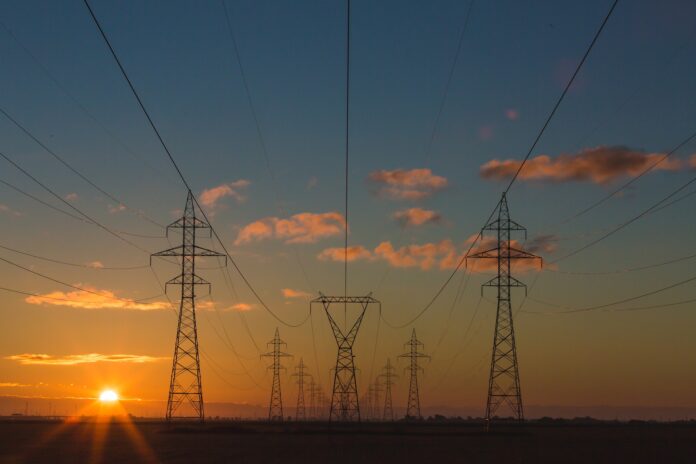Adam N. Lee, chinaworker.info
China is experiencing its worst power cuts in two decades. The cause is a “coal shortage” – a state of affairs that points to much deeper economic and political problems.
China is by far the world’s biggest producer of coal, producing 3.84 billion tonnes worth in 2020 (five times more than India, the world’s number two). So how can there be a shortage? Because China also sources 70 percent of its electricity from coal, despite years of record-breaking investments in green alternatives. Not only is this a disaster for the climate, but Chinese mines are seemingly unable to keep up with the economy’s coal addiction.
There is a powerful built-in resistance in China’s political system to a shift away from coal, which is still favoured by vested interests within the ‘Communist’ CCP-state. So today’s coal crunch is a man-made crisis caused by a combination of profiteering and bureaucracy – the twin features of China’s state capitalist economic model.
Eighteen of China’s 31 provinces have imposed power cuts since mid-September, hitting industry and households hard. In some provinces, factories are working a three-day week or even less. Often without warning, households especially in the depressed Northeast have suffered blackouts, elevators jamming and even traffic lights and street lamps going dark. Candles have sold out in some cities. State broadcaster CCTV reported that 20 workers in Liaoning province were hospitalised with carbon monoxide poisoning when ventilators at their factory were shut off.
The central government in Beijing has taken a series of crisis measures. All China’s coal mines have been told to operate at full capacity even during holidays, and many disused mines are being reopened. The sudden pivot back to coal is a major embarrassment for Xi Jinping’s regime in the build-up to the Glasgow COP26 summit.
Political crisis
But for Xi’s regime the power crisis is a much bigger problem on the home front. This has dealt a further serious blow to public sentiment towards the CCP. Power cuts, higher unemployment and turbulence in the property market, combined with continuing lockdowns in various cities due to fresh outbreaks of Covid-19, are beginning to test people’s patience and contrast sharply with official claims that Xi’s regime is building ‘common prosperity’.
By late October, even petrol and diesel were being rationed due to a 20 percent increase in wholesale prices during the month, causing refineries and petrol stations to limit sales because they can no longer make a profit. This is a replay of the coal crunch, which was largely caused by the government’s pricing system in which wholesale prices move freely according to the ‘market’ while retail prices to consumers are fixed by the government.
Coal prices have more than doubled this year due to production constraints and a surge in demand from industries rebounding from pandemic lows. This is a global phenomenon. But China has been impacted more severely because so much of its power generation depends on coal. Squeezed between higher coal prices and fixed electricity tariffs that prevented them from passing on the extra costs to consumers, Chinese power plants – mostly state-owned – deliberately ran down their coal stocks in a form of “go slow” protest as their profits evaporated.
An additional problem was the CCP’s ban on Australian coal which took effect last year as part of the deepening imperialist Cold War between the US and China. Australia has aligned itself with the US position. Especially the call for an investigation into the origins of Covid-19 by Scott Morrison’s government drew a furious reaction from Beijing. China was quite dependent on Australia’s higher quality coal especially for steel-making. In the current crisis, some Chinese ports have begun unloading Australian coal even though the ban is officially still in place.
The coal crunch was also exacerbated by the CCP’s climate policies and pressure upon it, intensified by the US-China Cold War, to show the world its best face at the COP26 talks. Beijing set strict carbon reduction targets for provincial governments at the start of the year, but many took no action until they received reprimands from the central authorities in August.
“It is typical of bureaucrats to allow those targets to be missed for much of the year and then scramble to meet them in the final quarter,” commented Wang Xiangwei of the South China Morning Post.
A marathon, not a sprint
These factors combined to produce a bureaucratic perfect storm, shutting down large parts of the economy. Xi’s regime was forced to take panic measures, effectively abolishing its controls on electricity prices by allowing power plants to raise tariffs up to 20 percent above base levels. This was hailed in a Reuters report as the “boldest” step so far in China’s power sector reform i.e. liberalization. It contrasts sharply with the view held by some that the CCP is moving in an “anti-capitalist” direction.
All Beijing’s measures so far are short-term and palliative, rather than addressing a problem that is rooted in a mix of capitalist anarchy and bureaucratic heavy-handedness. The full nationalisation of the power sector and energy market is needed, as part of a socialist and democratically-planned transformation of the economy. This requires workers and consumers exercising control from below, which can only be realised through the formation of independent trade unions challenging totalitarian top-down rule.
China’s power crisis could last into the first months of 2022. “We are in for a marathon, we are not in for a sprint,” said Joerg Wuttke, who is president of the European Chamber of Commerce in China. Despite the latest emergency measures, on 26 October the National Development and Reform Commission warned that coal prices had “totally deviated from supply-and-demand fundamentals,” and were still on an “irrational” upward trend.
Xi’s regime blundered into this crisis, which should be a warning to those, including many capitalist commentators, who believe the CCP regime is infallible in the field of economic management – it’s handling of the ongoing property market crisis being a case in point.
At the UN climate talks, China’s coal problem is something that can’t be swept under the carpet, nor is it the only gigantic spanner in the works. It underlines why today’s rulers – all capitalist governments – threaten our planet’s survival. China’s submission to the COP26 talks, released at the end of October, was widely greeted as a “disappointment”, containing nothing new. Xi Jinping’s promise for “peak carbon” by 2030 is far too little, far too late. The current coal crisis is a clear sign we need system change, which only the working class can bring about.




